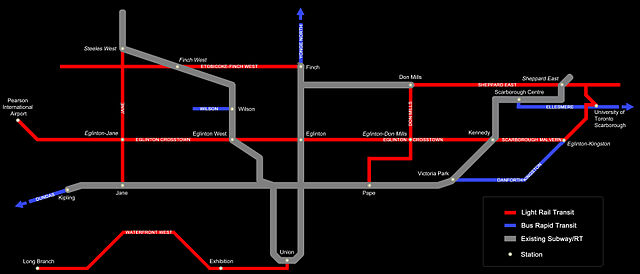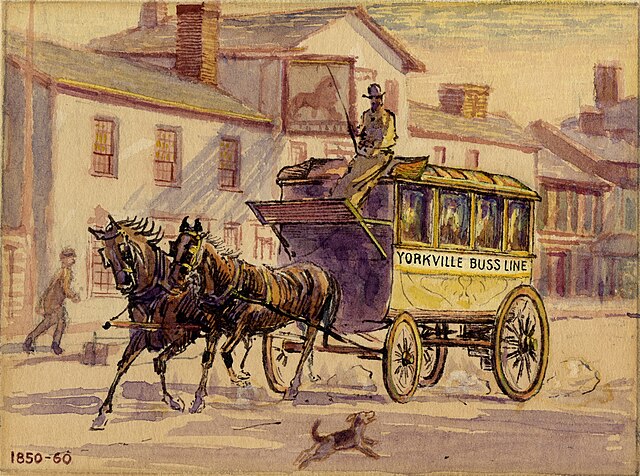Transit City was a plan for developing public transport in Toronto, Ontario, Canada. It was first proposed and announced on 16 March 2007 by Toronto mayor David Miller and Toronto Transit Commission (TTC) chair Adam Giambrone. The plan called for the construction of seven new light rail lines along the streets of seven priority transit corridors, which would have eventually been integrated with existing rapid transit, streetcar, and bus routes. Other transit improvements outlined in the plan included upgrading and extending the Scarborough RT line, implementing new bus rapid transit lines, and improving frequency and timing of 21 key bus routes. The plan integrated public transportation objectives outlined in the City of Toronto Official Plan, the TTC Ridership Growth Strategy and Miller's 2006 election platform.
Promotional billboard indicating the original seven proposed LRT lines.
Image: Transit City
Public transportation in Toronto
Public transportation in the Canadian city of Toronto dates back to 1849 with the creation of a horse-drawn stagecoach company. Today, Toronto's mass transit is primarily made up of a system of subways, buses, and streetcars, covering approximately 1,200 km (750 mi) of routes operated by the Toronto Transit Commission (TTC) and inter-regional commuter rail and bus service provided by GO Transit.
Union Station is a major transportation hub in Toronto, with public transit agencies GO Transit and the Toronto Transit Commission operating from the station.
Established in 1849, Williams Omnibus Bus Line was the first mass transit system in the city, operating four horse-drawn stagecoaches from St. Lawrence Market to the Yorkville.
Streetcar operated by the Toronto Railway Company, c. 1895
Toronto Transportation Commission bus in Yorkville in 1923






